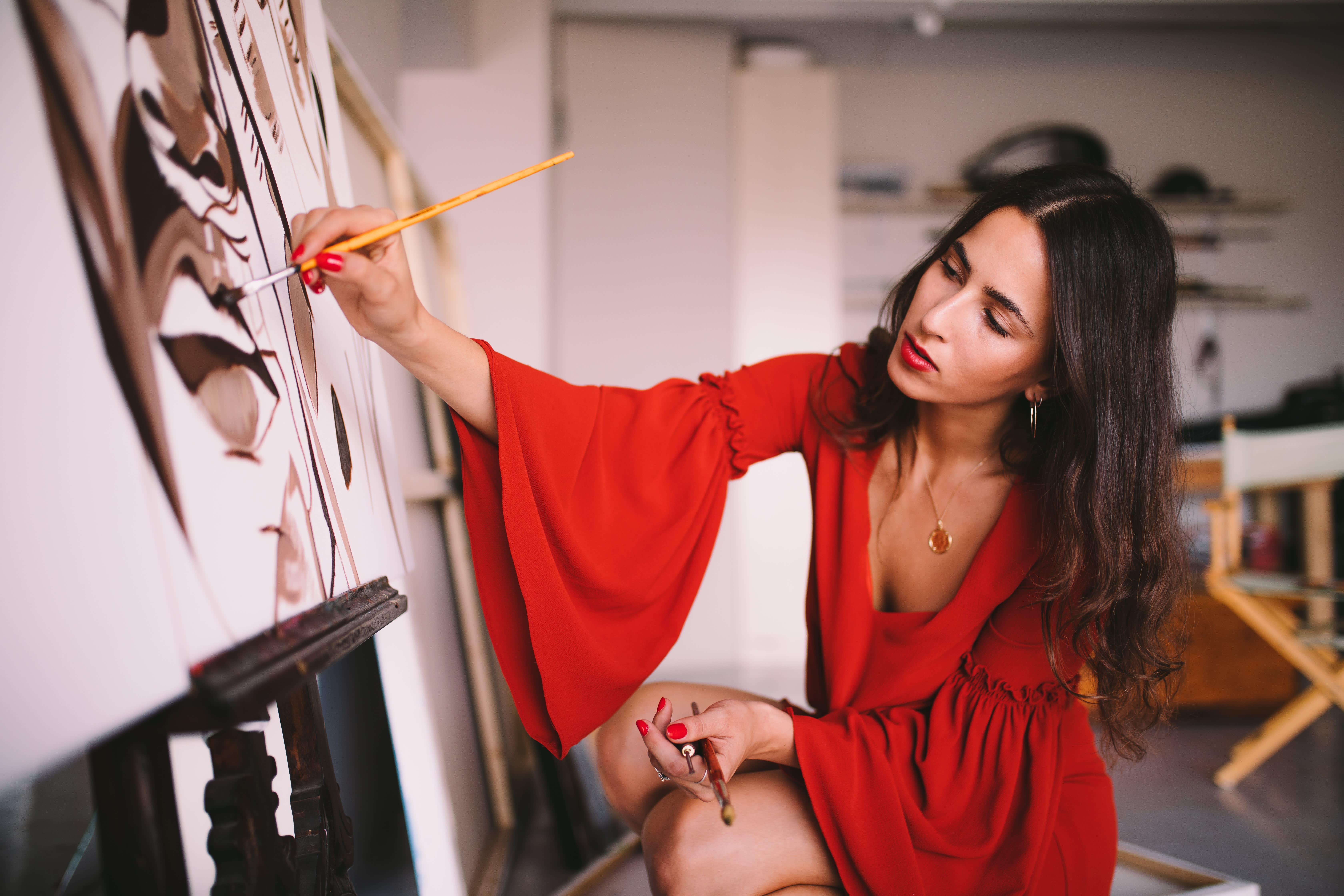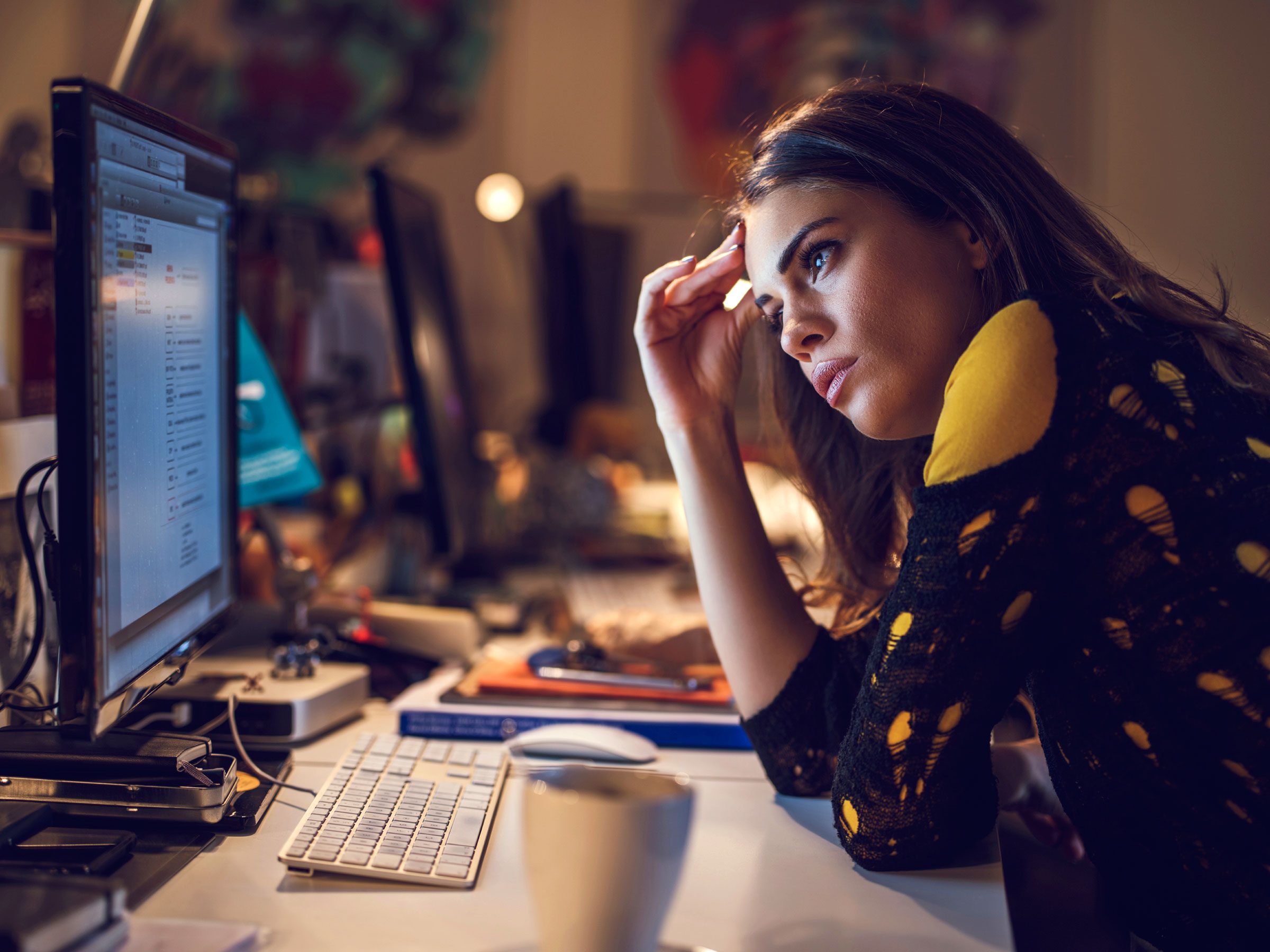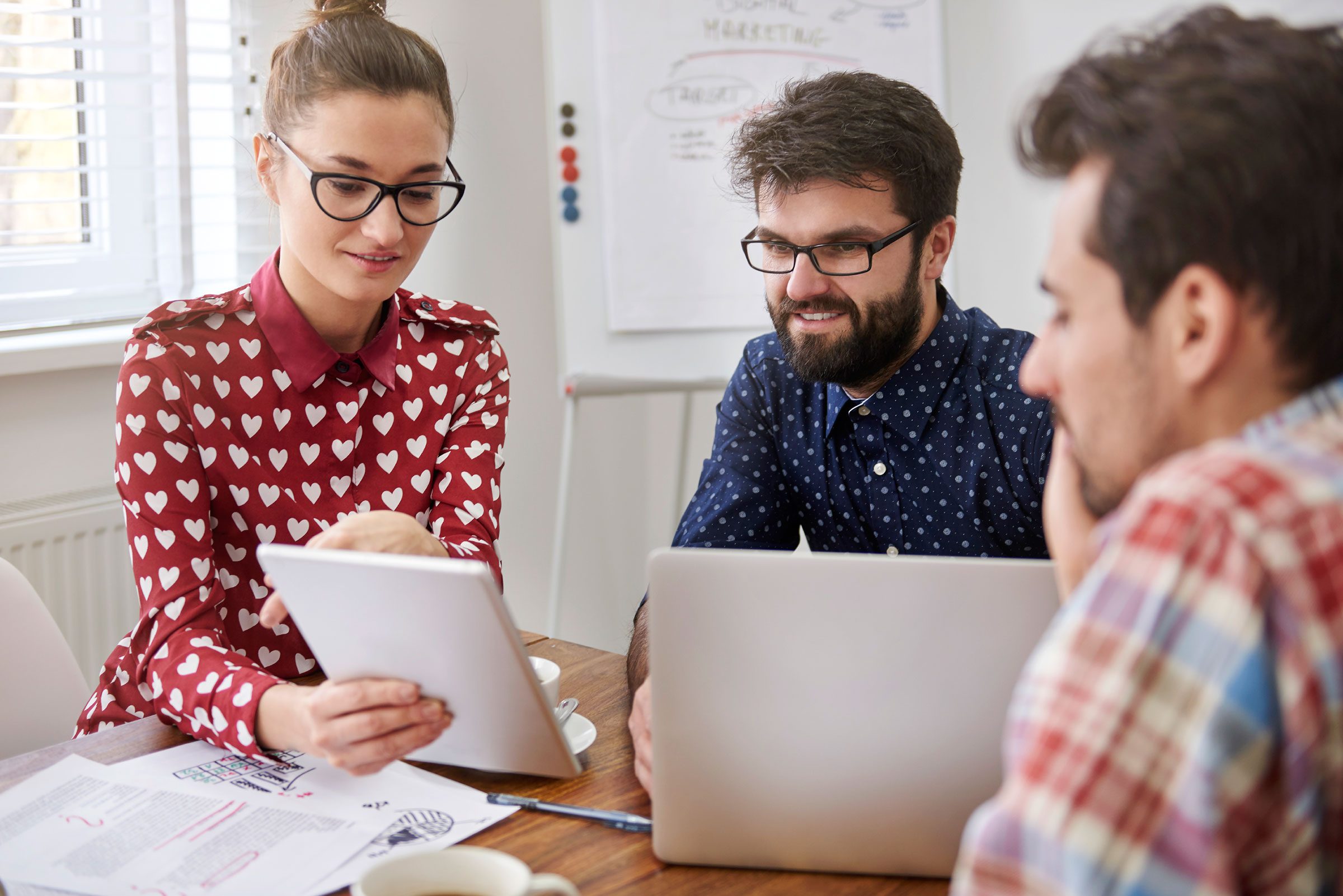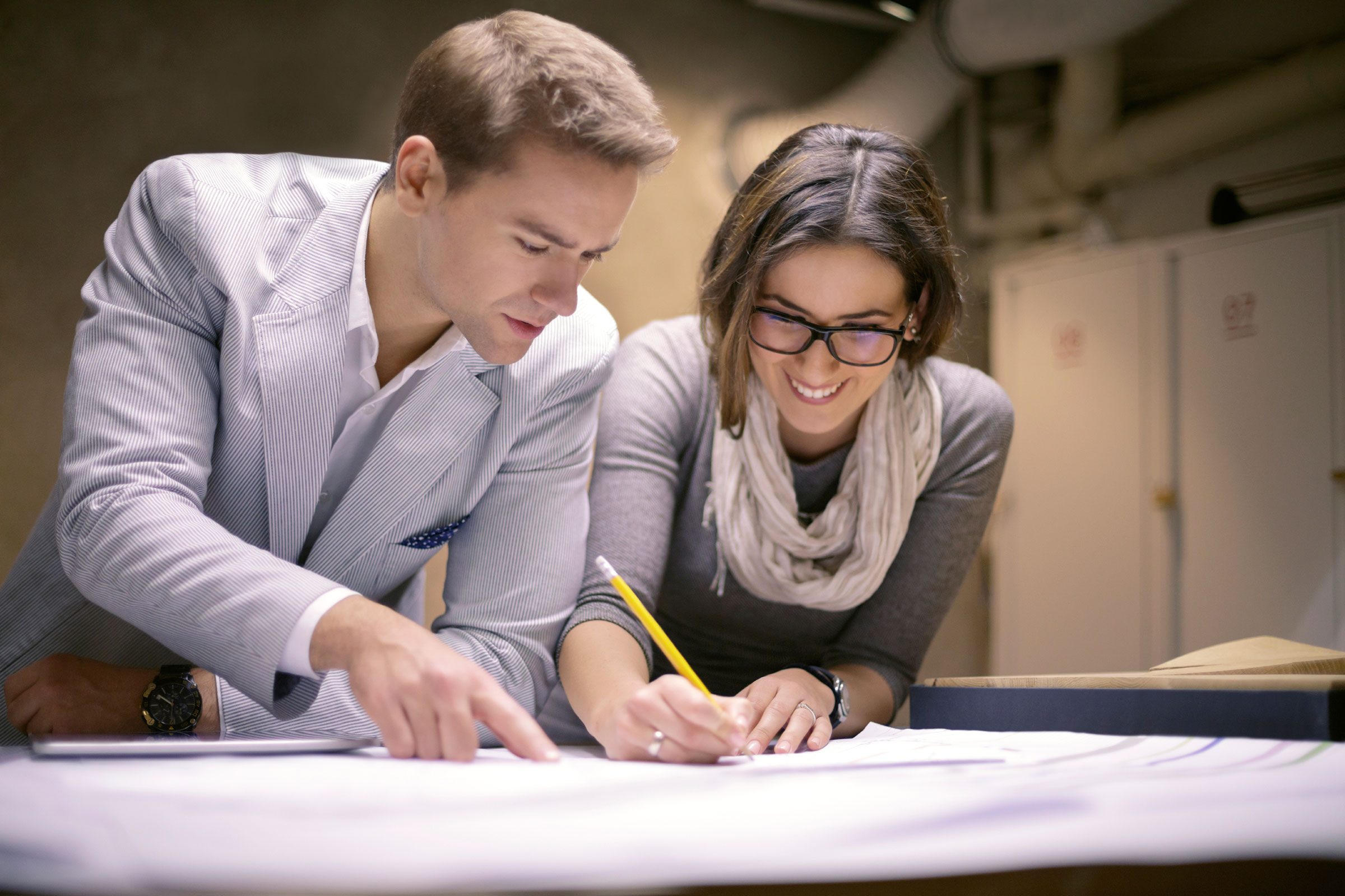The creative person is a visionary, a dreamer, a trailblazer. They see the world with a unique perspective, always seeking new ways to express themselves and push the boundaries of possibility.
From the depths of their imagination, creative people bring forth groundbreaking ideas, stunning works of art, and transformative solutions. Their ability to think outside the box and connect seemingly disparate concepts sets them apart as catalysts for progress and inspiration.
– Definition of a Creative Person

A creative person is an individual who possesses a unique combination of traits that enable them to generate original ideas, solve problems in unconventional ways, and produce works that are both innovative and meaningful.
Key characteristics of creative individuals include:
- Imagination: The ability to generate and visualize new ideas and concepts.
- Curiosity: A thirst for knowledge and a desire to explore new possibilities.
- Open-mindedness: A willingness to consider different perspectives and embrace new experiences.
- Flexibility: The ability to adapt to changing circumstances and think outside the box.
- Perseverance: The determination to overcome obstacles and see projects through to completion.
Types of Creativity
Creativity can manifest in various forms, including:
- Artistic creativity: The ability to create original works of art, such as paintings, sculptures, music, and literature.
- Scientific creativity: The ability to generate new ideas and discoveries in the field of science.
- Business creativity: The ability to develop innovative products, services, and business models.
- Technological creativity: The ability to design and develop new technologies and gadgets.
Types of Creativity

Creativity encompasses a diverse spectrum of manifestations. Different types of creativity possess unique qualities and find applications in various domains.
Divergent Creativity
Divergent creativity involves generating multiple, unconventional ideas or solutions to a problem. It encourages exploration of alternative perspectives and brainstorming of diverse concepts. This type of creativity is crucial in fields such as design, advertising, and problem-solving.
Convergent Creativity
Convergent creativity focuses on finding a single, optimal solution to a problem. It requires analytical thinking and the ability to synthesize information effectively. This type of creativity is prevalent in fields like engineering, mathematics, and scientific research.
Conceptual Creativity
Conceptual creativity involves creating new concepts, theories, or frameworks. It requires a deep understanding of the subject matter and the ability to connect seemingly unrelated ideas. This type of creativity is essential in fields like philosophy, psychology, and theoretical science.
Expressive Creativity
Expressive creativity is characterized by the expression of emotions, experiences, and personal perspectives through artistic mediums. It allows individuals to convey their inner worlds and connect with others on an emotional level. This type of creativity is prominent in fields such as art, music, and literature.
Inventive Creativity
Inventive creativity involves creating new products, processes, or technologies. It combines technical knowledge with imaginative thinking to develop practical solutions. This type of creativity is crucial in fields like engineering, technology, and innovation.
The Relationship between Creativity Types and Innovation
Different types of creativity often intertwine and contribute to innovation. Divergent creativity generates a wide range of ideas, while convergent creativity helps refine and select the most viable ones. Conceptual creativity provides the underlying framework for innovation, while expressive creativity communicates the value and impact of new ideas.
Inventive creativity brings these ideas to life through practical applications.
The Creative Process

The creative process is a complex and iterative journey that involves inspiration, experimentation, and iteration. It is a dynamic process that can vary depending on the individual and the type of creative work being produced.
The stages of the creative process typically include:
- Preparation: Gathering information, research, and exploring ideas.
- Incubation: Allowing ideas to gestate and develop subconsciously.
- Illumination: The “aha!” moment when the solution or idea emerges.
- Verification: Testing and refining the idea to ensure it meets the desired criteria.
- Implementation: Putting the idea into practice and creating the final product.
Inspiration
Inspiration is the spark that ignites the creative process. It can come from a variety of sources, such as personal experiences, observations, or the work of others. Inspiration can be fleeting, so it is important to capture and record ideas as they come.
Experimentation
Experimentation is the process of trying out different ideas and approaches to see what works best. This is an important stage of the creative process, as it allows you to explore different possibilities and refine your ideas.
Iteration
Iteration is the process of repeating and refining the creative process until you are satisfied with the results. This may involve making changes to the original idea, trying different techniques, or seeking feedback from others.
Methods for Fostering Creativity
Fostering creativity is a crucial aspect of nurturing one’s creative abilities. By employing specific techniques and creating a supportive environment, individuals can enhance their creative thinking and innovation.
Techniques for Enhancing Creativity, Creative person
- Brainstorming:Generate a wide range of ideas by freely associating thoughts and ideas.
- Mind Mapping:Create a visual representation of ideas, connecting them with lines and branches.
- Freewriting:Write down whatever comes to mind without judgment or editing.
- Sketching and Doodling:Engage in visual exploration and experimentation to spark new ideas.
- Playing with Objects:Manipulate objects in different ways to stimulate new perspectives.
Importance of a Supportive Environment
A supportive environment is essential for fostering creativity. It encourages individuals to take risks, experiment, and share their ideas freely. This environment may include:
- Collaborative Workspaces:Promote teamwork, idea exchange, and cross-fertilization of ideas.
- Open-Mindedness and Acceptance:Encourage individuals to embrace diverse perspectives and unconventional ideas.
- Feedback and Constructive Criticism:Provide constructive feedback to foster growth and refine ideas.
- Access to Resources:Ensure access to materials, tools, and information to support creative endeavors.
- Recognition and Appreciation:Acknowledge and celebrate creative contributions to boost motivation.
Collaboration and Creativity
Collaboration is a powerful catalyst for creativity. Working with others can bring diverse perspectives, skills, and experiences, leading to innovative solutions and unexpected outcomes.
- Idea Cross-Pollination:Share ideas and insights to stimulate new connections and perspectives.
- Complementary Skills:Leverage different skill sets to approach problems from multiple angles.
- Constructive Challenges:Encourage friendly competition and constructive criticism to refine ideas.
- Collective Brainstorming:Generate a wider range of ideas through group brainstorming sessions.
- Shared Goals:Align team efforts towards common creative goals to foster a sense of purpose.
Examples of Creative People
:max_bytes(150000):strip_icc()/GettyImages-542725391-56a797863df78cf772976bd6.jpg)
Throughout history, numerous individuals have exhibited exceptional creativity, leaving an indelible mark on their respective fields and the world at large. These creative minds have not only produced groundbreaking works but have also challenged conventions, pushed boundaries, and inspired generations to come.
Let us delve into the lives and contributions of some of the most celebrated creative individuals, exploring the specific qualities that fueled their brilliance and the lasting impact of their work.
Leonardo da Vinci
- Field:Art, Science, Engineering
- Contributions:Mona Lisa, The Last Supper, Vitruvian Man
- Impact:Renaissance master, revolutionized art and science
Leonardo da Vinci was a true polymath, a master of multiple disciplines. His insatiable curiosity and keen observation led to groundbreaking discoveries in art, science, and engineering. His paintings, such as the Mona Lisa, are renowned for their technical virtuosity and profound emotional depth.
His scientific studies and inventions, including the flying machine and the parachute, demonstrated his visionary thinking and commitment to innovation.
Marie Curie
- Field:Physics, Chemistry
- Contributions:Discovery of radium and polonium, pioneered research on radioactivity
- Impact:Nobel Prize winner, groundbreaking work in nuclear physics
Marie Curie was a pioneering scientist whose groundbreaking research in radioactivity forever changed our understanding of the physical world. Her relentless determination and unwavering focus led to the discovery of radium and polonium, for which she was awarded the Nobel Prize in Chemistry.
Her work laid the foundation for modern nuclear physics and paved the way for advancements in medicine and energy production.
Albert Einstein
- Field:Physics
- Contributions:Theory of Relativity, Photoelectric Effect
- Impact:Revolutionized our understanding of space, time, and energy
Albert Einstein was a theoretical physicist whose groundbreaking work revolutionized our understanding of the universe. His Theory of Relativity challenged classical notions of space and time, while his Photoelectric Effect explained the interaction between light and matter. Einstein’s brilliance stemmed from his ability to think abstractly and question established theories, leading to paradigm shifts in the field of physics.
A creative person is always looking for inspiration, and there’s no better place to find it than creative pinellas. This website is a hub for all things creative, from art and design to music and writing. Whether you’re looking for inspiration for your next project or just want to connect with other creative people, creative pinellas is the place for you.
And who knows, you might just find your next muse there.
Creativity in Different Fields
Creativity manifests in diverse ways across various disciplines. Let’s explore how it unfolds in different domains and uncover the commonalities and variations in creative approaches.
Art
In art, creativity manifests through the expression of ideas, emotions, and experiences. Artists use various mediums such as painting, sculpture, music, and dance to convey their unique perspectives and interpretations of the world.
Science
In science, creativity involves generating new ideas, hypotheses, and theories. Scientists use their imagination and analytical skills to develop innovative solutions to complex problems and advance our understanding of the natural world.
Technology
In technology, creativity drives the development of new products, processes, and systems. Engineers and technologists combine technical expertise with imagination to create solutions that meet human needs and push the boundaries of innovation.
Business
In business, creativity is essential for developing new products, services, and marketing strategies. Entrepreneurs and business leaders use their creativity to identify opportunities, solve problems, and gain a competitive advantage.
The Value of Creativity

Creativity is an invaluable asset for individuals and society as a whole. It fosters innovation, enhances problem-solving abilities, and contributes to personal fulfillment.Creativity fuels innovation by allowing individuals to think outside the box and come up with novel ideas and solutions.
It enables them to challenge existing norms and explore new possibilities, leading to groundbreaking advancements in various fields.Moreover, creativity plays a crucial role in problem-solving. By approaching challenges from unique perspectives, creative individuals can identify unconventional solutions that may not be apparent to others.
They can connect seemingly unrelated concepts and generate innovative approaches to overcome obstacles.Furthermore, creativity contributes significantly to personal fulfillment. Engaging in creative activities provides a sense of purpose and accomplishment. It allows individuals to express themselves, explore their potential, and derive joy from the process of creation.
Economic Benefits of Creativity
Creativity drives economic growth by stimulating innovation and entrepreneurship. Creative individuals often establish new businesses and develop products or services that cater to emerging needs and demands. This not only creates employment opportunities but also contributes to the overall prosperity of a region.
Social Impact of Creativity
Creativity fosters social cohesion and cultural diversity. It allows individuals from different backgrounds to connect through shared experiences and appreciate diverse perspectives. Creative expressions, such as art, music, and literature, can promote understanding, empathy, and tolerance within society.
Challenges Faced by Creative People

The creative journey is not without its obstacles. Creative individuals often encounter a myriad of challenges that can hinder their progress and stifle their creativity.
Overcoming Creative Blocks
Creative blocks are a common obstacle faced by creative individuals. These blocks can manifest in various forms, such as writer’s block, artist’s block, or composer’s block. They can be caused by a variety of factors, including stress, anxiety, fear of failure, or simply a lack of inspiration.
- Strategies for Overcoming Creative Blocks:
- Take breaks and engage in activities that promote relaxation and stress relief.
- Seek inspiration from external sources, such as nature, art, or music.
- Set aside dedicated time for creative work, even when inspiration is lacking.
- Collaborate with others to gain fresh perspectives and ideas.
Real-world Example:
The renowned writer Maya Angelou overcame writer’s block by setting aside dedicated writing time each day, even when she didn’t feel inspired. This disciplined approach allowed her to produce some of her most celebrated works.
Dealing with Self-Doubt and Criticism
Self-doubt and criticism can be crippling to creative individuals. They can lead to a lack of confidence in one’s abilities and a reluctance to share their work with others.
- Strategies for Dealing with Self-Doubt and Criticism:
- Recognize that self-doubt is a common experience and does not define your worth.
- Seek support from mentors, friends, or family members who believe in your abilities.
- Focus on your strengths and accomplishments, rather than dwelling on your weaknesses.
- Practice self-compassion and treat yourself with kindness.
Real-world Example:
The painter Vincent van Gogh struggled with severe self-doubt throughout his life. However, he persevered and continued to paint, eventually gaining recognition for his unique style and artistic genius.
Balancing Creativity with Practical Concerns
Creative individuals often face the challenge of balancing their creative pursuits with practical concerns, such as financial stability, time constraints, and family responsibilities.
- Strategies for Balancing Creativity with Practical Concerns:
- Explore part-time or flexible work arrangements that allow for creative time.
- Seek financial support through grants, scholarships, or crowdfunding platforms.
- Prioritize creative activities and make time for them, even if it means sacrificing other activities.
- Collaborate with others to share responsibilities and lighten the workload.
Real-world Example:
The composer Ludwig van Beethoven faced financial difficulties throughout his life. However, he remained dedicated to his music, composing some of the most celebrated works in classical history despite his personal struggles.
Impact of Technology on Creative Challenges
Technology has both facilitated and posed challenges for creative people.
- Facilitating Creativity:
- Access to digital tools and resources has expanded creative possibilities.
- Online platforms provide opportunities for collaboration and sharing.
- Artificial intelligence can assist with tasks such as idea generation and content creation.
- Challenges Posed by Technology:
- Overreliance on technology can stifle creativity and limit original thought.
- Constant digital distractions can hinder focus and productivity.
- Technology can create a competitive environment, leading to increased pressure and anxiety.
Role of Collaboration in Overcoming Creative Challenges
Collaboration can be a powerful tool for overcoming creative challenges.
- Benefits of Collaboration:
- Fresh perspectives and ideas from diverse backgrounds.
- Shared knowledge and expertise.
- Reduced workload and increased efficiency.
- Increased motivation and accountability.
Real-world Example:
The Pixar Animation Studios team is known for its collaborative approach. Each film is the result of a collective effort involving artists, animators, writers, and directors, contributing their unique talents to create award-winning masterpieces.
Creativity and Technology

Technology has become an integral part of our lives, and it has also had a profound impact on the way we create. On the one hand, technology can provide us with new tools and resources that can help us to express ourselves in new and innovative ways.
On the other hand, technology can also be a distraction, and it can be difficult to find the time and space to be creative when we are constantly bombarded with information and stimuli.
There are a number of ways that technology can enable creative expression. For example, digital tools can be used to create images, music, and videos that would not be possible without technology. Technology can also be used to share our creative work with others, and to connect with other creative people.
Technology as a tool for creativity
- Digital tools can be used to create images, music, and videos that would not be possible without technology.
- Technology can also be used to share our creative work with others, and to connect with other creative people.
- For example, digital painting and drawing software allows artists to create realistic or stylized digital paintings and illustrations, using a wide range of brushes, colors, and effects.
- Music production software enables musicians to create and record music with a vast array of instruments, samples, and effects, often within a virtual studio environment.
- Video editing software empowers filmmakers and video creators to assemble, edit, and enhance video footage, adding visual effects, transitions, and soundtracks.
However, technology can also be a hindrance to creativity. For example, the constant availability of information and stimuli can make it difficult to focus and to find the time and space to be creative. Additionally, the pressure to constantly be connected and to produce new content can be overwhelming, and it can lead to burnout.
Technology as a hindrance to creativity
- The constant availability of information and stimuli can make it difficult to focus and to find the time and space to be creative.
- The pressure to constantly be connected and to produce new content can be overwhelming, and it can lead to burnout.
- For instance, social media platforms and the internet provide constant access to news, entertainment, and other distractions, which can make it challenging to disconnect and engage in creative pursuits.
- The expectation to maintain an active online presence and to produce regular content can create a sense of pressure and urgency, potentially hindering the creative process.
Ultimately, the relationship between creativity and technology is complex. Technology can be both a tool and a hindrance to creativity, and it is important to find a balance that works for you. If you are struggling to be creative, try to find ways to use technology to your advantage, but also be aware of the potential pitfalls.
Creativity and Artificial Intelligence

Artificial intelligence (AI) is rapidly evolving, and its potential impact on creativity is a topic of much debate. Some experts believe that AI will revolutionize the way we create art, music, and other creative works, while others worry that it could stifle creativity or even replace human artists altogether.
There is no doubt that AI has the potential to be a powerful tool for creative people. AI can be used to generate new ideas, explore different possibilities, and create unique and original works of art. For example, AI can be used to create realistic images of people or objects that don’t exist, or to compose music that is both pleasing to the ear and original.
Ethical Implications
However, there are also ethical implications to consider when using AI to create art. Some people argue that AI-generated art is not truly creative, as it is not created by a human being. Others worry that AI could be used to create art that is offensive or harmful.
For example, AI could be used to create realistic images of people in compromising or embarrassing situations, or to create music that is designed to manipulate or control people.
Developing a Creative Mindset

Nurturing a creative mindset is essential for unlocking your creative potential. Embrace curiosity, openness, and perseverance to foster a fertile ground for innovative ideas.
Curiosity and Openness
Curiosity fuels exploration and expands your knowledge base. Embrace diverse perspectives, seek new experiences, and question assumptions. Openness welcomes unconventional ideas and allows you to see beyond the obvious.
Perseverance
Creativity often requires persistence. Don’t let setbacks discourage you. Embrace failures as opportunities for learning and growth. Perseverance enables you to push through challenges and unlock innovative solutions.
– Creativity in Education

Creativity is a crucial aspect of education that fosters critical thinking, problem-solving, and innovation in students. By nurturing creativity in the classroom, educators can equip learners with the skills and mindset necessary to navigate the challenges and opportunities of the 21st century.
Best Practices for Fostering Creativity
Encourage Exploration and Play
Allow students to experiment, take risks, and explore different ideas without fear of judgment.
Provide Open-Ended Activities
Design assignments and projects that allow for multiple interpretations and solutions, promoting divergent thinking.
Value Student Perspectives
Create a classroom culture where students’ ideas are valued and respected, fostering a sense of belonging and confidence.
Incorporate Technology
Utilize digital tools and resources to enhance creativity, such as collaborative brainstorming platforms and virtual reality simulations.
Promote Collaboration
Encourage students to work together on projects, sharing ideas and perspectives to generate innovative solutions.
Integrating Creativity into Different Subject Areas
Science
Design experiments that encourage students to think critically and propose original hypotheses.
Math
Use problem-solving activities that require students to apply concepts in novel ways and find multiple solutions.
Language Arts
Foster creative writing through storytelling, poetry, and drama, encouraging students to express themselves uniquely.
Social Studies
Integrate project-based learning to allow students to research and present historical events or social issues from diverse perspectives.
Arts
Provide opportunities for students to explore various art forms, including music, visual arts, and dance, fostering their artistic expression.
Challenges and Solutions
Standardized Testing
Emphasize the importance of creativity alongside academic achievement, advocating for a balanced approach to education.
Teacher Training
Provide professional development opportunities for teachers to enhance their skills in fostering creativity in the classroom.
Classroom Environment
Create a physical and emotional environment that supports risk-taking, experimentation, and idea-sharing.
Research and Case Studies
Studies have shown that fostering creativity in education leads to:
- Improved academic performance
- Enhanced problem-solving abilities
- Increased motivation and engagement
- Greater innovation and adaptability
Case studies demonstrate the transformative impact of creative learning environments, such as the Reggio Emilia approach in preschool education.
Creativity and Mental Health: Creative Person
Creativity is often seen as a positive force in mental health, but it can also have negative effects. On the one hand, creative expression can be a way to cope with mental health challenges and improve well-being. On the other hand, it can also be a source of stress and anxiety.
Positive Effects of Creativity on Mental Health
There are a number of ways in which creative expression can positively impact mental health. For example, it can:
- Reduce stress and anxiety
- Improve mood
- Boost self-esteem
- Provide a sense of purpose
- Help people to connect with others
Different types of creative expression can have different effects on mental health. For example, writing can be a way to process emotions and experiences, while painting can be a way to relax and de-stress. Music can be a way to express oneself and connect with others.
Negative Effects of Creativity on Mental Health
While creativity can have many positive effects on mental health, it can also have some negative effects. For example, it can:
- Lead to perfectionism
- Cause frustration and disappointment
- Trigger negative emotions
- Be a source of stress and anxiety
It is important to be aware of the potential negative effects of creativity so that you can take steps to minimize them. For example, if you find that you are becoming perfectionistic or frustrated with your creative work, it is important to take a break and come back to it later.
Creativity as a Therapeutic Tool
Creativity can be a powerful therapeutic tool for people with mental health challenges. It can provide a way to:
- Express emotions
- Cope with stress
- Improve self-esteem
- Develop new coping mechanisms
- Connect with others
There are a number of different ways to use creativity as a therapeutic tool. For example, you can:
- Write in a journal
- Paint or draw
- Play music
- Dance
- Act
If you are interested in using creativity as a therapeutic tool, it is important to find a type of creative expression that you enjoy and that feels comfortable for you. You may also want to consider working with a therapist who can help you to use creativity in a way that is beneficial for your mental health.
The Relationship Between Creativity and Mental Health in Different Cultures
The relationship between creativity and mental health can vary across different cultures. In some cultures, creativity is seen as a sign of good mental health, while in other cultures it is seen as a sign of mental illness.In Western cultures, creativity is often seen as a positive trait.
Creative people are often seen as being more intelligent, more successful, and more well-adjusted than non-creative people. However, in some non-Western cultures, creativity is seen as a sign of mental illness. For example, in some African cultures, people who are creative are often thought to be possessed by spirits.The different ways in which creativity is viewed across cultures can have a significant impact on the mental health of creative people.
In cultures where creativity is seen as a positive trait, creative people are more likely to be happy and well-adjusted. However, in cultures where creativity is seen as a sign of mental illness, creative people are more likely to be stigmatized and marginalized.
Resources and Support Systems for Individuals Who Want to Use Creativity to Improve Their Mental Health
There are a number of resources and support systems available for individuals who want to use creativity to improve their mental health. These resources include:
- Art therapy
- Music therapy
- Dance therapy
- Drama therapy
- Writing workshops
- Support groups
If you are interested in using creativity to improve your mental health, it is important to find a resource or support system that is right for you. You may also want to consider working with a therapist who can help you to use creativity in a way that is beneficial for your mental health.
Top FAQs
What is the definition of a creative person?
A creative person is someone who possesses a unique ability to generate original ideas, solve problems, and express themselves through various forms of art, science, or other creative endeavors.
What are the key characteristics of a creative person?
Creative people often exhibit traits such as curiosity, open-mindedness, flexibility, perseverance, and a willingness to take risks.
How can I foster creativity in myself?
To foster creativity, engage in activities that stimulate your imagination, such as reading, writing, drawing, playing music, or exploring new hobbies. Embrace a growth mindset, seek inspiration from diverse sources, and don’t be afraid to experiment and make mistakes.
